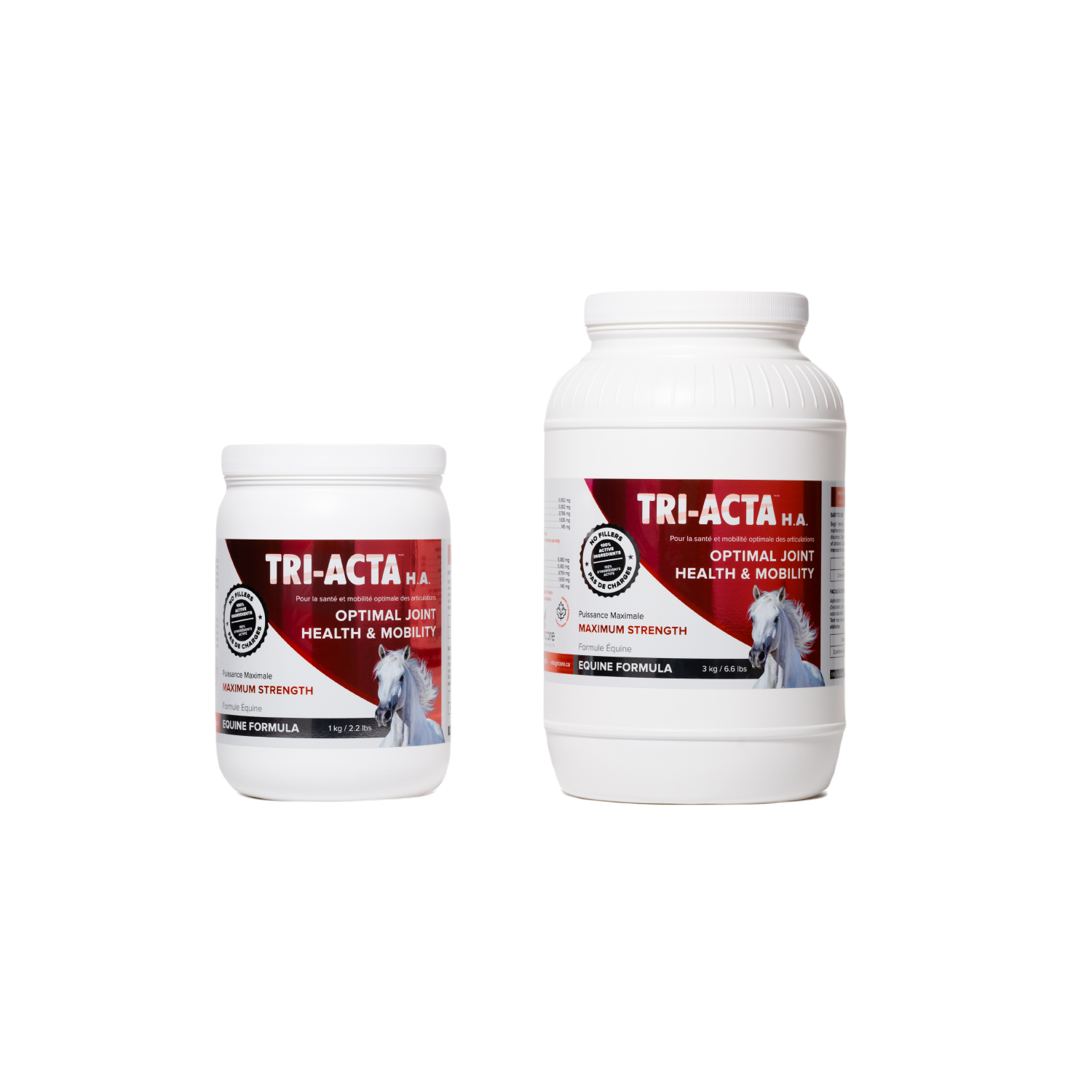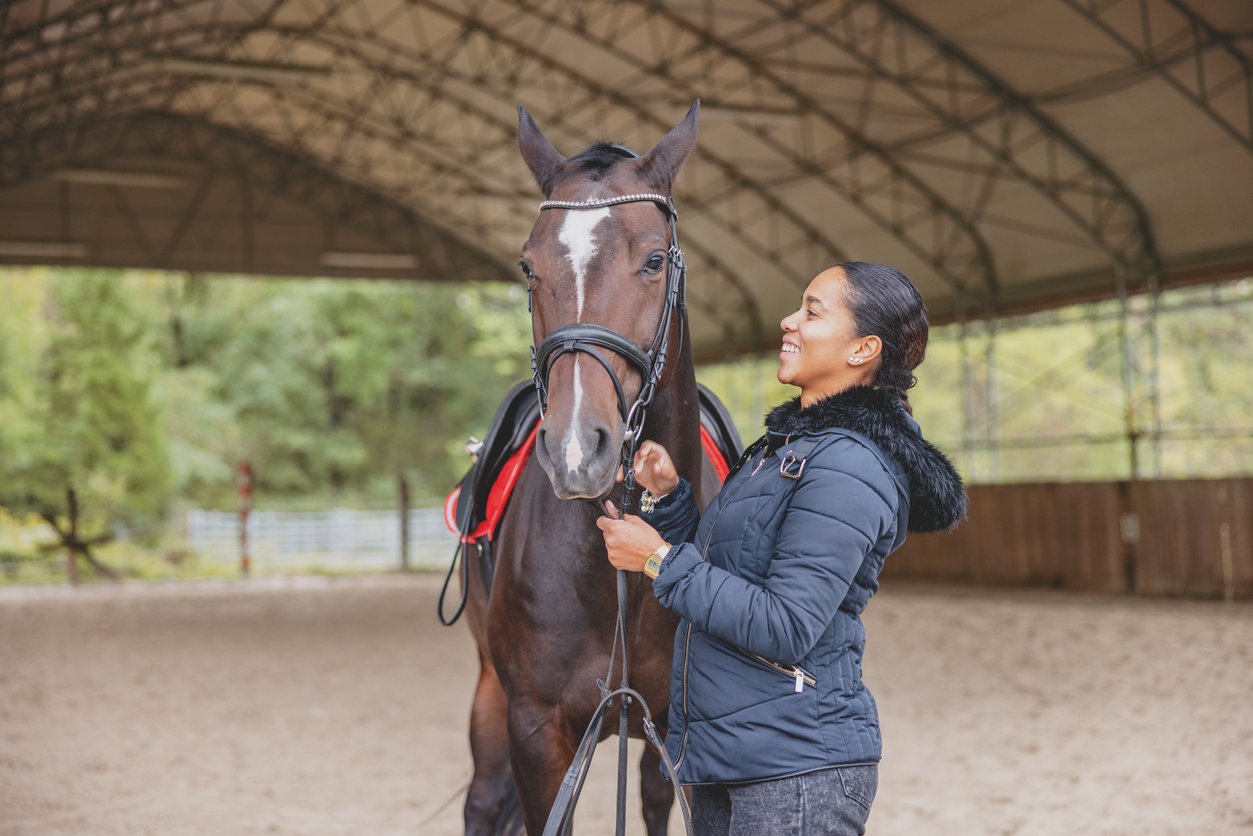Table of Contents
Thinking about buying a horse? Congratulations!
Maybe you’re excited about leisurely rides on Summer mornings or feeling like you’re riding on a cloud as your horse gallops over an open field with you on their back.
Or maybe you want to enter the horse racing scene, work with your horse to develop a strong bond and condition them to perform to the best of their ability with you at their side.
Regardless of why you want to buy a horse, it’s an exciting time—you’re gaining a new best friend, after all!
But before you rush over to the first stable you find on Google and hand over your money for the first pretty horse you see, it’s important to take a step back and do some research and pre-purchase preparation. This way, you’ll be able to make effective decisions that land you a horse that fits your riding skill level, personality, and riding goals.
In this article, we explore what to look for when buying a horse, considerations for buying a horse for the first time, common mistakes that people often make when buying a horse (especially the first time), and more.
What to Know Before Buying a Horse
As part of the preparation process before buying a horse, it’s important to ask yourself some important questions about yourself, your plans for riding and “using” the horse (work, leisure, or performance), and of course, about the horse itself, like health history and personality.
Some tips for buying a horse, whether it’s your first time or not, include:
1. Knowing What You Want Out of Your Horse
It may seem obvious, but sometimes people get so excited about buying a horse that they forget to ask what they are expecting to gain from the relationship with the animal.
Chances are you’re looking for companionship, but do you want a horse for:
- Leisurely riding
- Competing in show jumping, dressage, or racing
- Breeding
- Working (hauling, pulling, etc.)
These are important questions to ask yourself to steer yourself in the right direction when buying a horse.
2. Understanding Your Riding Level
It’s important to be honest about your riding experience and skill level before purchasing a horse. Being realistic and honest about your riding ability will help you choose an appropriate horse that matches your skill level. If you’re a beginner, you’ll want a horse that’s more easy-going and willing to listen to commands.
3. Health and General History
You’ll want to know everything about your potential new equine’s health status—what kind of life they’ve had, any issues, including injuries, and any training they’ve received. Ask as many questions as possible to help you get the full picture of your potential new horse, as this information will give you key insight into potential future vet bills, training time and costs, any special accommodations that the horse might need, and more.
Depending on the cost of the horse and the circumstances behind the purchase, you may want to invest in a pre-purchase health check, as this will evaluate the horse for a particular function (e.g., racing, working, leisure, etc.)
A typical pre-purchase health check for a horse includes:
- A review of the horse's entire medical history with the owner or agent, including vaccination, deworming schedules, feeding, supplementation, and more.
- Pulse, respiration, and temperature checks
- Palpating limbs and body parts
- Drawing blood to test for certain diseases like Equine Infectious Anemia (EIA), medications, and more
- Basic oral examination
- Testing the feet, hooves, and joints
- Watching the horse travel in a straight line and in small circles at a walk, trot, and canter
- Observing the horse’s general behaviour
4. Included Equipment
Some sellers will include equipment for the horse's sale, such as saddles, blankets, and bridles. In some cases, these items might be positioned as “value-adds” to make the sale more enticing, especially with private sellers. Considering these items can be expensive, it might seem like a great deal to purchase your horse with all the equipment they need included.
However, the seller's equipment may not be in rideable condition, either because it’s too old or doesn’t fit you properly. When buying a horse, you should always factor in the cost of quality tack into your budget that will allow your horse to move freely without pain. Plus, it should fit you as the rider as well!
5. Demonstration of the Horse’s Skills and Abilities
While this may not be possible or needed in every situation (purchasing a race horse at an auction for race horses, for instance), it’s a good idea to get a demonstration of a horse’s skills and abilities before you buy it, especially if you have expectations of what the horse will be able to do.
For example, if the seller states that the horse is fine with being stabled alone, ask to have the horse removed from other horses and placed in an isolated stable to see how the horse reacts. If the owner says the horse is great at navigating variable terrain, ask if you can walk with the horse and owner as they lead the horse through shallow water or up and down a small hill. Remember, the more information you have on your new buddy, the better you can prepare for creating a great home for them.
Buying a Horse for the First Time
The above considerations absolutely apply when you’re buying a horse for the first time, but there are other important horse purchase tips that you should follow as well:
- Enroll in regular riding lessons with a reputable horse trainer or instructor if you plan on riding your horse. Participating in lessons helps strengthen and develop your skills as a horse rider and gives you the tools that you need to handle various situations that you may encounter while riding your horse, such as variable terrain, noises, other animals, and more.
- Consider leasing a horse before purchasing to see if you can dedicate the time and effort you need to properly care for your horse, as owning a horse is a huge commitment. Leasing is a great way to ease yourself into horse ownership, as full and partial lease options are available. With a full lease, you’re completely responsible for the care and maintenance of the horse, but with a partial lease, some of the responsibilities are maintained by the horse’s actual owner (you can negotiate which responsibilities, like feeding and riding, are retained by the horse’s owner). Many horse trainers and instructors have horses for lease in their barns.
- Determine your budget for your first horse purchase. Your budget for purchasing your first horse largely depends on what you’d like to do with your horse. If you just want a horse to ride, have fun with, and maybe compete at a local level in some lighthearted events, you are likely looking at a cost of around $5,000 CAD. For higher-level aspirations like competing in show jumping, horse racing, or dressage, the cost will increase.
In addition to these things to consider when buying a horse, you’ll also need to factor in ongoing expenses that will be involved in caring for your horse.
The table below outlines the main important ongoing expenses that you should consider for your budget:
|
Horse Care or Maintenance Activity |
Important Points to Know |
|
Boarding |
|
|
Lessons |
|
|
Competitions |
|
|
Farrier |
|
|
Tack and equipment |
|
|
Bedding |
|
|
Feeding and supplementation |
|
{product-callout-3]
Red Flags When Buying a Horse
Aside from the costs and commitments that you’ll need to be prepared to handle when buying a horse, there are certain negative tendencies that you should look out for to protect yourself.
These red flags when buying a horse include:
1. Obvious Health Problems
Not every horse will display their health problems, but you should be on the lookout for any obvious signs that the horse isn’t feeling their best. Lethargy, excessive sweating, trembling, lack of coordination, and other visible issues like sores, redness, and swelling are all signs that the horse isn’t very healthy.
Several online sources suggest that some sellers may drug their horses to cover up a temperament, behavior, or training issue. Horses that are under the influence of drugs may seem lethargic, tremble, or have excessive sweating.
2. Refusal to Let the Buyer Try the Horse or Limiting Activities
A prospective buyer should be allowed to interact with the horse they are looking to purchase, even if it’s just to groom to lead the horse to learn more about their behavior and see if a connection exists. This should be the case whether the horse has training or not. If you’re looking to purchase a horse for riding, a good seller will also let you ride the horse (provided it is saddle-broken).
You should also be able to try the things that the horse was advertised to be able to do. For example, if the horse was advertised to be great for trail riding, you should be able to take the horse out for a ride outside of an arena. If the horse was advertised to be great for reigning, then you should be able to try some maneuvers with the horse. If the seller refuses or tries to redirect you to do something else, that’s a clear red flag when buying a horse.
3. A Horse is “Registrable” But Doesn’t Have Papers
A very common tactic for an unreputable horse seller is to sell a " registrable " horse that doesn’t have any paperwork. A horse that is registrable will be one that can enter breed and open-class competitions with recognized organizations. A registered horse will cost more because they have to meet certain requirements to be registered. However, a shady seller may prevent a horse as registrable, and they just didn’t bother to complete the paperwork and, as a result, are offering you the horse at a better price. Even if the horse is indeed registrable, you’ll likely need to spend hundreds of dollars tracking down the correct paperwork and string of owners to the original breeder in order to get the horse properly registered.
4. Refusal to Answer Any Questions or Provide Specific Details
If the seller is dismissive about questions, refusing to provide specific information about things like the horse’s medical history, vaccinations, and injuries, then that’s a huge red flag. Any seller that isn’t forthcoming with information or tries to cover it up when they don’t know something should tell you all you need to know about who you are buying a horse from.
5. Pressuring the Buyer Into a Sale
Some sellers will employ pressure tactics to sell a problem horse to the first interested buyer so they can get rid of it quickly. They might use language like “I have multiple interested buyers, so I need your decision right now” to make it seem like the horse will be gone if you don’t commit to buying. If the seller has multiple interested buyers, why not just go with one of them? In addition, if they cared about their horse, they would take the time to get to know all potential buyers and vet them before selling the animal. If they are pressuring you into a quick sale, that’s an indication that they are more interested in offloading the animal to someone else. Recognizing high-pressure sales tactics is important for protecting yourself.
What to Look for When Buying a Horse
Of all the things to consider when buying a horse, it’s best to use common sense. Be sure to get all the information you can about a horse before you agree to purchase, and don’t buy from high-pressure sellers or sellers that present various red flags. If your gut tells you to back off, then it’s always a good idea to listen to yourself. Buying a horse shouldn’t be a quick process; it requires research and education to make a good decision.
Purpose: Race Horse, Leisure
Depending on what you’d like to use your horse for, you need to approach the purchasing process differently. Buying a race horse versus a leisure horse is going to be a vastly different experience.
Purchasing a Race Horse
You can usually find a racehorse to purchase at a public auction as foals or yearlings (one or two years old) before starting their racehorse career. This is a good place to find young horses that can have promising racing careers with the right conditioning and training. Depending on budget, they can also be purchased privately or during their existing racing careers at sales that feature race horses in training.
There are other important considerations that you need to keep in mind when purchasing a race horse. Depending on the area where you plan to enter your horse into races, you may need a license first. In most provinces in Canada, for example, you need to purchase a license to participate in official horse races.
Here’s some information from the Canadian Thoroughbred Horse Society: British Columbia Division that outlines three ways that you can purchase a race horse:
- A claiming race. At a claiming race, a person can purchase a race horse that costs anywhere from $4,000 to $50,000 15 minutes prior to a race. After the race is concluded, the successful buyer gains ownership of their claimed horse, and they usually run their horse in another race in about two to three weeks after. The purpose is to buy a horse at a lower price and condition them to move up the claiming ladder.
- Canadian Thoroughbred Horse Society Yearling Sale. Another popular way to purchase a race horse is through the CTHS yearling sale. These horses have never raced before but are primed to become excellent race horses. Usually, a prospective buyer will have a trainer or agent to help them select an appropriate yearling, as they can use their experience and expertise to check the pedigree and conformation of each horse. These horses may have untapped potential, but nurturing that potential is key. They will need to be boarded, broken, and trained appropriately and must reach two years of age before racing.
- Private sale. This is often the most expensive way to purchase a thoroughbred race horse, but the buyer is obtaining a horse that is usually ready to race immediately.
Purchasing a Leisure Horse
When buying a horse you will use for general riding and leisure activities, you can look at many different sources. Farmer auctions are popular places, as well as horse-selling websites, and classified ads in local newspapers (or online news sources). The best horse-buying websites will require their sellers to list detailed information about the horse and vet ads to a certain point, but it is still up to the buyer to do their due diligence. Leisure horses that are not participating in any official competition do not need to be registered, but equine insurance is still recommended to cover unexpected illnesses, theft of equipment, and more.
Considerations for Buying an Older Horse
Older or senior horses often have specific medical needs and other requirements that you should be aware of before purchase. An older horse won’t be as spry as a younger horse, so getting a pre-purchase health check is even more important, especially on their joints and body structure. Wear and tear on the joint structures especially may mean that the horse shouldn’t participate in high-intensity activities, but that doesn’t necessarily mean that they can’t work or be ridden. In fact, light riding and steady work is often great for working out still joints.
To further protect your senior horse's joint health, incorporate TRI-ACTA H.A. for Equine into their daily diet.
The ingredients in TRI-ACTA H.A. are outlined in the table below:
|
Ingredient |
Purpose |
|
Glucosamine Sulfate and HCl |
|
|
Chondroitin |
|
|
Methylsulfonylmethane (MSM) |
|
|
Hyaluronic acid |
|
TRI-ACTA H.A. for Equine
Our maximum strength formula is perfect for horses that are ageing, experiencing arthritis and stiffness, are in training and competition, or under a heavy workload.

Summary
For first-time buyers, enrolling in riding lessons, considering leasing options, and setting a realistic budget are valuable strategies. Ongoing expenses related to boarding, lessons, competitions, farrier care, tack, bedding, and feeding must also be factored in.
Tailored approaches are necessary when purchasing a horse for a specific purpose, such as racing or leisure. Whether buying a racehorse through auctions, yearling sales, or private deals or opting for a leisure horse from various sources, understanding the unique requirements of each category is vital.
Furthermore, addressing their specific medical needs, especially related to joint health, is essential when considering older horses. Incorporating supplements like TRI-ACTA H.A. for Equine can aid in maintaining their mobility and ensuring a comfortable life.
Ultimately, the key is to approach the horse-buying process with patience, diligence, and common sense. By taking your time, gathering as much information as possible, and listening to your instincts, you can make an informed decision that leads to a fulfilling partnership with your equine companion. Remember, buying a horse is not just a transaction; it is a commitment to the well-being and happiness of both you and your four-legged friend. Happy riding!
Purchase TRI-ACTA online or learn where to buy at a store near you.
Newsletter Signup
Subscribe to our newsletter to receive the latest news and exclusive offers.
.jpg?height=2000&name=Cliick_Integricare-DISPLAY-REVISEDV2%20(1).jpg)
Proactive & Therapeutic Joint Supplements
When given daily, Integricare joint supplements recover bone and joint injuries faster and help prevent mobility injuries from happening in the first place.











